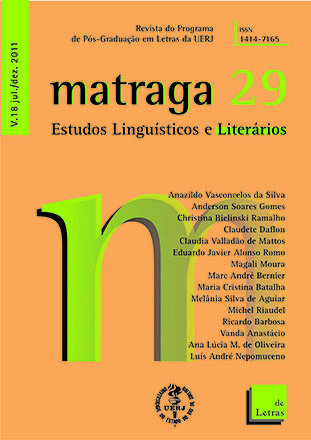Winckelmann, a bela alegoria e a superação do 'paragone' entre as artes
Palavras-chave:
Winckelmann, alegoria, paragone.Resumo
O texto faz uma análise do conceito de Alegoria em Winckelmann. Procuramos mostrar como o autor faz um uso muito particular do termo, adotando-o principalmente em suas análises de pintura. O conceito de Alegoria em pintura parece ter favorecido, aos olhos de Winckelmann, tanto a realização da ut picura poesis, quanto a adoção das esculturas clássicas como modelo para a pintura, mas ao mesmo tempo esta opção implicou em uma rejeição do modelo narrativo privilegiado pela tradição clássica do século XVII, em favor de um modelo semelhante ao adotado por grandes artistas da tradição barroca do período.
Downloads
Downloads
Publicado
Como Citar
Edição
Seção
Licença
AUTORIZAÇÃO
A Matraga – Revista do Programa de Pós-Graduação em Letras da UERJ está autorizada a publicar o artigo ora submetido, caso seja aceito para publicação online. Fica atestado que a contribuição é original, que não está sendo submetida a outro editor para publicação, e que a presente declaração é a expressão da verdade.
Os trabalhos publicados no espaço virtual da Matraga – Revista do Programa de Pós-Graduação em Letras da UERJ serão automaticamente cedidos, ficando os seus direitos autorais reservados à Matraga. Sua reprodução, total ou parcial, é condicionada à citação dos autores e dos dados da publicação.

A Matraga utiliza uma Licença Creative Commons - Atribuição-NãoComercial 4.0 Internacional.





